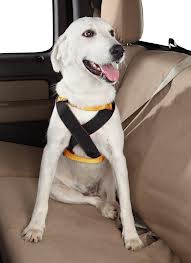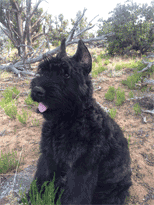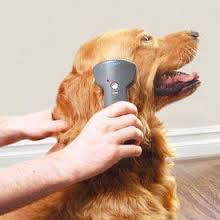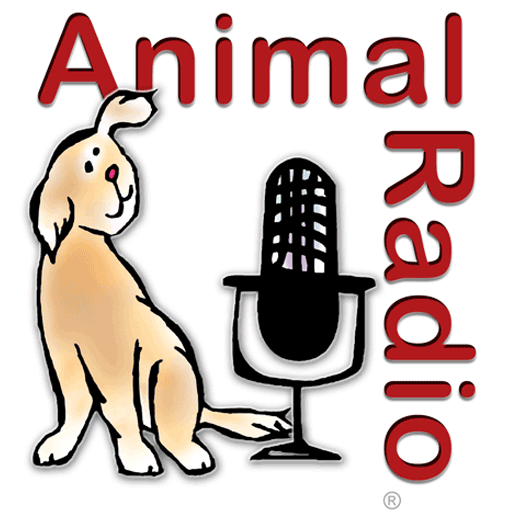Beth "O" Stern
 Yes, she is the wife of Howard Stern. But more importantly, Beth Ostrosky-Stern is an avid animal advocate, and she fosters a bunch of animals at home. She says Howard is really into her pets and sometimes he'll get very emotional when the animals find homes.
Yes, she is the wife of Howard Stern. But more importantly, Beth Ostrosky-Stern is an avid animal advocate, and she fosters a bunch of animals at home. She says Howard is really into her pets and sometimes he'll get very emotional when the animals find homes.
It's not strange for Beth to foster whole families. So it's not surprising that Beth fostered a momma cat and her litter of four kittens, as well as three other kittens. This all happens at her house and keeps her busy! Unfortunately, it is kitten season (when is it not?) in these summer months and every shelter is overpopulated with cats.
There was also the time when Beth decided to go into a municipal shelter and grabbed a litter of kittens. Both Beth and Howard fostered the litter. Howard even mentioned it on his radio show. As a result, they received over 100 applications from wonderful people who wanted to adopt the kittens. Beth, along with the North Shore Animal League, screened potential adopters and found six kittens wonderful homes. Beth then decided to grab another litter.
Somehow, we can't picture Howard Stern with kittens, but Beth assures us that he is right there with her. He even photographs and names them and even cried when the first litter went to their new homes. Beth states that Howard falls in love with these kittens as quickly as she does.
Beth was the host of the show, "Spoiled Rotten Pets" on Nat Geo, and when asked what she does to spoil her pets, she tells us that Leon Bear, her 22-pound cat, slept in the bed with Howard and her and took up more space than she did. Beth told us that there were so many nights when she had the worst sleep because Leon Bear was comfortable and she was left sleeping on the edge of the bed. Beth said she always puts her pets' comfort first and always has about three cats in bed with her and Howard every night.
 When she was growing up, Beth's family always had rescued animals. These included everything from Guinea Pigs to chickens. They always had two cats and a dog in the household as well.
When she was growing up, Beth's family always had rescued animals. These included everything from Guinea Pigs to chickens. They always had two cats and a dog in the household as well.
Beth and Howard rescue cats from the North Shore Animal League. Beth loves to rescue adult cats, which fill her house with so much love! They usually have a dog in their house too. When asked if she is a cat or dog person, Beth states that she is, "An equal opportunist," when it comes to the animals.
Beth is a volunteer for the North Shore Animal League and has been their spokesperson for many years. They are the largest no-kill adoption organization in the world. Beth's mission is to spread the word to adopt from your local shelter. Do not buy from pet stores, which facilitate a horrible cycle of puppy mills. She states that, "When you adopt from a shelter, you are saving two lives, the one you are adopting and you are opening up space for someone else to come in."
Beth and Howard Stern were married at Le Cirque restaurant in New York City on October 3, 2008. Beth received her first noticeable move role as one of the daughters of Ben Stiller's supposed birth parents in the 1996 film, Flirting with Disaster. She also played a more prominent role four years later, in the film Whipped, with Amanda Peet. Along with films, Beth has also appeared on television, appearing in the final season of G4 show Filter and the Spike TV series Casino Cinema.
Visit Website
Pet Restraints FAIL
Lindsey Wolko, Center for Pet Safety
 A study from the Center for Pet Safety revealed that the pet restraints tested have a 100-percent failure rate. Does this mean you shouldn't use them when traveling with your pet? Absolutely not! However, Lindsey Wolko has the lowdown on what works and what doesn't when it comes to keeping your pets safe in the car.
A study from the Center for Pet Safety revealed that the pet restraints tested have a 100-percent failure rate. Does this mean you shouldn't use them when traveling with your pet? Absolutely not! However, Lindsey Wolko has the lowdown on what works and what doesn't when it comes to keeping your pets safe in the car.
The focus of this pilot study was to determine the general effectiveness of canine automotive restraints. Do they prevent injury of the pet? Do they prevent secondary injury to humans in an automobile accident?
Because standardized testing does not exist for this class of pet product, they used a test generally referenced by some canine safety harness manufacturers for child restraint systems.
The testing was conducted at MGA Research Corporation's test facility located in Manassas, Virginia. The pilot study was completed using a specially designed crash test dog model weighing 55 pounds at a speed of 30 miles per hour. They did not use live animals in their testing. For the purpose of this initial study, they tested products intended for large dogs, generally 50-85 pounds. (Sample breeds in this size include Poodles, German Shepherds, Irish Setters, Labrador Retrievers, Boxers, and Weimaraners.)
They tested multiple brands and sizes of selected harness products that claimed they have been tested for crash testing and crash protection.
Other add-on products to vehicles such as booster seats, zip-lines and extension tethers don't have to go through testing, so many manufacturers do not test these products at all.
Alarmingly, the pilot study revealed a 100-percent failure rate. None of the harnesses were deemed safe enough to protect both the dog and the humans in the event of an accident.
 The slow-motion video provide evidence of what happens to a large, harnessed dog in a simulated collision of a car traveling 30 miles per hour. Examples of problems include:
The slow-motion video provide evidence of what happens to a large, harnessed dog in a simulated collision of a car traveling 30 miles per hour. Examples of problems include:
- Extremely low likelihood of survivability for the animal.
- Danger to humans when the dog becomes a missile.
- Choking and/or other bodily harm to the animal when harness materials cinch tightly upon impact.
- Extensive damage to fixtures within the vehicle caused by the projectile animal.
Pet product safety is a concern shared by consumers and manufacturers, and they understand why people want to know the brand names tested in the pilot study conducted by CPS. However, they were not in a position to reveal the names of individual products or brand names, and here's why:
Their primary concern was NOT to attack individual manufacturers for selling well-intentioned products. If they shared brands, they shifted the focus away from what is truly needed: measurable, safe standards that manufacturers can follow for the benefit of consumers.
After these standards are in place, they can then work with manufacturers to guide them as they develop safe, tested products.
In other words, manufacturers are not ignoring safety standards. There are simply are no existing standards in place. This is not the fault of the manufacturer. Pet product safety is an emerging issue, and the Center for Pet Safety was formed to address it. The good news is that we are seeing better protection, but you need to be very discerning on how you shop for these products.
Visit Website
Devices That Allow Us To Talk To Our Pets
Con Slobodchikoff, Animal Behaviorist
 Con Slobodchikoff, Animal Behaviorist and Professor Emeritus, Biology Department, Northern Arizona University, studied animal linguistics. He noticed patterns that indicated language among cats and even prairie dogs. He said that some day we may have an App that will translate our conversations with animals.
Con Slobodchikoff, Animal Behaviorist and Professor Emeritus, Biology Department, Northern Arizona University, studied animal linguistics. He noticed patterns that indicated language among cats and even prairie dogs. He said that some day we may have an App that will translate our conversations with animals.
Slobodchikoff decoded animal language, trying to understand what they talk about. He also wrote about it in his book, Chasing Doctor Dolittle.
He specialized in working with prairie dogs and found out that they have alarm calls that have words for different predators. They have a word for coyote, another word for dog, hawk and even a word for a human. Within those words, they can describe the size and shape of the individual predator. For example, they can describe the color and size of a dog and the color of clothing on humans. It is a very sophisticated language.
Slobodchikoff understands the prairie dogs' language with the use of technology. The prairie dog's calls are recorded and then put into a computer. They then measure various aspects of the calls. They also worked on a way to duplicate their language so as to speak back to them. This meant they spoke English into a computer and had a program synthesize the proper prairie dog language and then played it back to the prairie dogs. Slobodchikoff stated that they have the potential to do this back and forth speaking with these animals.
When asked about cat language, Slobodchikoff stated that we don't know much about cat vocalization. We do know, however, that cats have about 5 different kinds of vocalization. Some of these seem to be universal; such as the clicking sounds when a cat sees a bird, but when it sees an insect it, makes a slightly different clicking sound. We unfortunately don't really know that much about cat language, and have only started exploring the language of cats.
 Not too long ago we thought that cats were solitary animals who were quite happy to be off by themselves. But when people started looking at semi-feral cats, they found that cats were very social animals who liked to socialize with other cats that they were related to. We are finding out more about both the social structure and the vocalization of cats. However, we still have a ways to go.
Not too long ago we thought that cats were solitary animals who were quite happy to be off by themselves. But when people started looking at semi-feral cats, they found that cats were very social animals who liked to socialize with other cats that they were related to. We are finding out more about both the social structure and the vocalization of cats. However, we still have a ways to go.
Slobodchikoff acknowledges that one of the biggest problems between humans and their companion animals is a lack of ability to understand each other. He believes that in using this technology, years from now they will be able to develop perhaps apps on a cellphone which would allows us to talk to our cats and dogs, and maybe even farm animals on a basic level.
Visit Website
Pheromones In Puppy Training - Dr. Debbie

So you just got a new puppy and you have all your training tools at the ready, the collar, leash and dog crate. But beyond that, do you have the one thing that can make your training tasks easier all around? Tap into your puppy's own sense of smell using canine pheromones and ease your new pup's training and transition into the home.
Pheromones are scent signals emitted by all animal species, including humans. Various pheromones work under the radar to influence the perceptions and behaviors of others within a species.
Shortly after whelping, a pheromone is emitted from the bitch's sebaceous (oil) glands located between the mammary glands. The pheromone, dubbed the canine appeasing pheromone, reassures the puppies, calms them and facilitates nursing. The bitch stops emitting this pheromone as the pups mature, but all dogs retain the ability to "read" this pheromone. Not only do older dogs recognize this pheromone, but it continues to have a natural calming effect on canines of all ages.
In veterinary behavior cases, the dog appeasing pheromone is used for dogs with noise phobias, car travel anxiety, separation anxiety and other fearful situations. Various forms are available including pheromone collars, plug in diffusers and sprays. The canine appeasing pheromone doesn't sedate the dog; rather it decreases fear and excitability.
The dog appeasing pheromone is also helpful for newly adopted puppies. Those first few days to weeks in a new home are full of changes for the pup faced with novel environments far from the comfort of mother and siblings. The dog appeasing pheromone has been shown to ease the transition of the pup into new home and improve sociability and training during a pup's critical socialization period.
Pheromone Research
For skeptics that need to see the proof in the studies, veterinary behavior studies have examined the positive influence of the dog appeasing pheromone. When comparing treatment responses for dogs with separation anxiety, the use of the dog appeasing pheromone equaled the benefit of the anti-anxiety medication, amitriptyline.
One study looked at 66 puppies as they settled into new homes after adoption. Approximately half of the puppies wore a pheromone collar and half wore a placebo. The study found that puppies wearing a pheromone collar displayed significantly fewer nuisance behaviors like vocalizations or scratching within 3 days of adoption. Pups wearing the pheromone collar woke their owner's less during the night and displayed fewer signs of distress and vocalizations throughout the course of the study.
The researchers concluded that pheromone collars helped both the pup and family. Pups were less stressed and adapted easier. By decreasing the pup's stress and fearful behaviors, the pet owners found a more enjoyable bonding experience with the new pup and faced less frustration through the training process.
 In another study, puppies 8 to 15 weeks were enrolled in an eight-week long puppy socialization and training class. Half wore a pheromone collar and the other half wore a placebo collar. The pups wearing the pheromone collar were calmer in the face of novel experiences and displayed less fear, anxiety, and aggression. In the end, the pups with the pheromone collar not only were less nervous, but had fewer behavioral problems and learned better. And a long-term effect on sociability was recognized in dogs up to one year after the class and study was completed.
In another study, puppies 8 to 15 weeks were enrolled in an eight-week long puppy socialization and training class. Half wore a pheromone collar and the other half wore a placebo collar. The pups wearing the pheromone collar were calmer in the face of novel experiences and displayed less fear, anxiety, and aggression. In the end, the pups with the pheromone collar not only were less nervous, but had fewer behavioral problems and learned better. And a long-term effect on sociability was recognized in dogs up to one year after the class and study was completed.
Pheromones and My Pup
As a previous owner of a nine-week old Bouvier puppy named Nikki, I used both the pheromone collar and diffuser upon welcoming my new pup home. One day before bringing Nikki home, I placed a pheromone diffuser close to the puppy crate, where it would have maximum benefit during her first nights in the kennel away from mother and siblings. Immediately upon leaving the breeder's home, Nikki was fitted with a pheromone collar to serve as a source of reassuring pheromones that went everywhere she did. The pheromone collar became a tool in Nikki's socialization. It was on her when she met new people or animals, when she explored new environments and during puppy kindergarten class.
Did pheromones help in my pup's transition and training? The four hour drive home from the breeders was a dream, no crying or whining the entire trip. After returning home, Nikki never soiled in her kennel during the day or night. I'll admit I had my share of interrupted sleep in the first two weeks, but most of Nikki's night time wakes were for genuine elimination needs. Overall, her transition into the home was smooth and lacked the wailing, inconsolable cries of a stressed pup.
The canine appeasing pheromone isn't a magic bullet though. Nothing matches a quality pup obtained from a reputable breeder who focuses on health, genetics and early socialization. Likewise, pheromones do not replace the hard work and consistent training efforts that any new pet owner must provide. However, by adding the the canine appeasing pheromone to your new puppy training, you can help your pup become the best he or she possibly can.
Featured veterinarian known as "Dr. Debbie" on national pet radio program, Animal Radio. Ebook author of "Yorkshire Terriers: How to Be Your Dog's Best Friend"; "Pugs: How to Be Your Dog's Best Friend"; "Mini Schnauzers: How to Be Your Dog's Best Friend"; and "Shih Tzu: How to Be Your Dog's Best Friend." Dr. Debbie's books.
Visit Website
The Dogfather's Grooming Tip with Joey Villani
 Brushing and Combing Your Pet
Brushing and Combing Your Pet
People have a misconception that they don't need to brush or comb a pet who has been shaved down. This is the biggest fallacy when it comes to grooming and will cause many problems.
All pets need to be brushed, even those that are shaved down as well as those called non-shedding pets. These so-called non-shedding pets actually do shed. They may not shed at the degree of other pets, such as a Bichon who will not shed as much as a German Shepherd, but the Bichon will shed. People think they can get away without the maintenance of brushing and combing if they shave their dog down.
Unfortunately, groomers don't take the proper amount of time when shaving down a dog to remove the undercoat. So what happens is that the undercoat wants to come out, which it does after it is shaved, as shorter hair, and it gets caught in your comforter, pillows carpets and rugs. This shorter hair is a lot harder to get out of your house.
If a dog is left with long hair, as they move about either indoor or outdoor, the dead undercoat is being pulled out as they rub against things. Unfortunately, you will still find this hair in your house, but this process builds healthy, nice, new coat. This will leave the coat better looking, with better texture and will also keep your pet smelling better. This natural process also stimulates the skin, so everything works better.
So make sure you brush and comb your pet on a regular basis. Not only will this be better for your pet's well being (and your home!) it is also a great way to socialize the pet who is a little shy.
Animal Radio News with Stacey Cohen
 Dinosaur Found In Utah
Dinosaur Found In Utah
Scientists in Utah discovered a new dinosaur species. The animal's unique features showed how diverse dinosaurs were in the southern U.S. It was found on the Grand Staircase-Escalante National Monument in the southern part of Utah years ago. The species was part of the triceratops family and it had one horn over its nose and the other horn over its eyes.
Bugs Intentionally Added To Your Food
Acclaimed European chef David Faure wasn't worried about his diners finding a bug in their meals. In fact, he intentionally added a variety of creepy crawlies to the dishes he served at his restaurant in Nice, France. Among the specialties were a dessert with crickets, which Faure liked for their "popcorn" flavor and a cod dish with mealworms, which he claimed added nice nutty tones to the fish. Faure got the idea for his "alternative foods" menu while traveling to countries where citizens use insects in their everyday diets. He said the biggest obstacle in his quest to make his own cooking more adventurous was finding a reliable local supplier of edible insects.
 Woolen Coffins
Woolen Coffins
A funeral director in Scotland found a way to help people stay environmentally friendly in the afterlife. The funeral home offerred their customers the option of using a woolen coffin rather than the standard model made out of wood. They explained that the softer caskets were made from 100-percent British wool and were supported by a strong recycled cardboard frame and cotton lining. They also came with a personalized nameplate and a biodegradable waterproof base. The demand for the alternative is growing, and many people were impressed with how "comforting" the woolen coffins feel.
Sunbathing Alligator Caught
An alligator that had been roaming around ditches in Gulfport, Mississippi was caught. Police said the gator was caught while sunbathing near a UPS building. Officers used a catch pole, typically reserved for dogs, to nab the animal. The three-and-a-half-foot gator was relocated to a safer place and away from neighborhoods.
 Fisherman Caught Shark With Bare Hands
Fisherman Caught Shark With Bare Hands
A recreational fisherman didn't like competing with sharks. On night, he pulled a 200-pound sandbar shark from the water with his bare hands in Massachusetts. The shark was reportedly eating the bluefish he wanted to catch. He said he caught the shark on his fishing line and when it had tired out, he ran into the water and snatched it up by the tail. He then released the shark so it could go back to hunting. He also said he's pulled dozens of sharks from their watery home because, quote "there's something satisfying about catching something bigger than you."
Apes Don't Forget!
Scientists discovered that just like humans, chimpanzees and orangutans can apparently remember things that happened years ago in their lives. The ability to remember events from the remote past has been considered a defining feature of human nature. It turns out that chimpanzees and orangutans can also recall distant memories. In experiments with fifteen chimpanzees and four orangutans, scientists tested whether the animals could remember events they experienced years ago. Three years prior, the apes had watched researchers hide tools that the chimpanzees and orangutans needed to grab rewards that were otherwise out of their reach. As the apes looked on, researchers repeatedly hid the tools a total of four times. In the experiment, scientists had the apes carry out the same tasks, in the same rooms, with the same experimenters. With just one exception, all the apes tested recalled where the necessary tool was hidden to reach its reward. This was the first study showing that chimpanzees and orangutans remember personal past events that took place a long time ago, when presented with the appropriate cues.
 Listen to the entire Podcast of this show (#1334)
Listen to the entire Podcast of this show (#1334)





